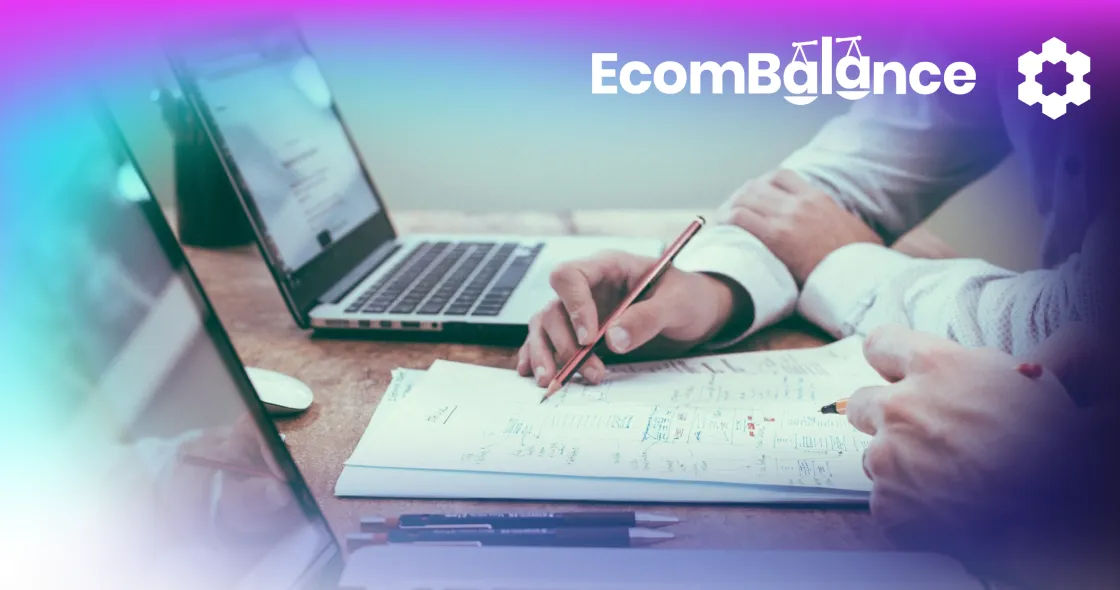With the 2024 tax season on the horizon, sellers are entering a crucial phase that could make or break their financial stability.
Proper planning and strategic management of finances during this time are essential to not only meet tax obligations but also to set the stage for a successful 2025. This article will delve into key year-end strategies, expert budgeting tips, and cash flow management techniques tailored for sellers, ensuring they are well-prepared for the challenges ahead.
With the right approach, sellers can optimize their financial strategies, reduce tax liabilities, and position their businesses for growth in the coming year.
Here’s how to get started.
1. Review and Optimize Your Inventory Management
Inventory management plays a critical role in your financial strategy, especially during the Q4 rush.
Overstocking can tie up valuable cash flow and lead to excess inventory that might need to be discounted post-holiday season, while stockouts can result in missed sales opportunities. Both scenarios can impact your profitability and tax liabilities.
Implementing Just-In-Time (JIT) Inventory
One approach to optimize inventory is by implementing a JIT inventory system. This method minimizes holding costs and reduces the risk of overstocking by ordering goods only when they are needed.
However, JIT requires accurate demand forecasting and a reliable supply chain. Sellers using this method must be cautious during Q4 when supply chains are often stretched thin.
Forecast demand and protect your Amazon businesses against rising inventory FBA fees with SoStocked.
Tax Implications of Inventory Write-Downs
If you do end up with excess inventory, consider the tax implications of inventory write-downs. The IRS allows businesses to deduct the cost of unsellable or obsolete inventory, reducing taxable income. Be sure to keep detailed records and consult with a tax professional to ensure compliance.
2. Leverage Tax Deductions and Credits
The IRS reported that 22% of small businesses overpaid on their taxes by not utilizing available deductions and credits. So, understanding and utilizing available tax deductions and credits can significantly reduce your tax liability, freeing up capital for reinvestment in your business.
Home Office Deduction
If you run your ecommerce business from home, you may be eligible for the home office deduction. This deduction allows you to deduct a portion of your home expenses, such as mortgage interest, rent, utilities, and insurance, proportional to the square footage used for business purposes.
Section 179 Deduction
The Section 179 deduction allows businesses to deduct the full purchase price of qualifying equipment and software purchased or financed during the tax year. For ecommerce sellers, this could include new computers, office furniture, or even software tools that enhance your operations.
In 2023, the deduction limit was $1,160,000, and while it adjusts annually, it’s a powerful tool for reducing taxable income.
Research and Development (R&D) Tax Credit
If you’ve invested in developing new products or improving existing ones, you might qualify for the R&D tax credit. This credit is designed to encourage businesses to invest in innovation and can apply to a wide range of activities, from software development to product testing.
3. Strategize Your Year-End Spending
Year-end spending can impact your tax liabilities and cash flow, so it’s important to approach it strategically.
Timing of Expenses
One key strategy is timing your expenses. By accelerating deductible expenses into the current tax year, you can reduce your taxable income. This could include paying for inventory, marketing expenses, or software subscriptions in advance.
However, balance this approach with cash flow considerations, ensuring that your business remains financially healthy.
Charitable Contributions
If your Amazon business donates excess inventory to charitable organizations via the FBA Donations program, consider making donations before the end of the year. Charitable contributions are tax-deductible, and they can also enhance your brand’s reputation, especially during the holiday season when consumers are more focused on giving back.
4. Consider Business Structure and Tax Planning
The structure of your business can have significant tax implications. As your ecommerce business grows, it may be worth considering whether your current structure is still the most tax-efficient.
Limited Liability Company vs. S Corporation
A Limited Liability Company (LLC) and an S Corporation (S Corp) are two different types of business entities that offer distinct advantages, particularly concerning liability protection and tax treatment.
Here’s a breakdown of each and how they differ.
What is an LLC?
An LLC is a flexible business structure that combines the liability protection of a corporation with the tax benefits of a sole proprietorship or partnership. It’s one of the most popular business structures for small businesses because it provides personal liability protection to its owners (called “members”). This means that members are generally not personally liable for the debts and liabilities of the business.
Key Features of an LLC
- Liability Protection: Members are protected from personal liability for business debts and claims, meaning their personal assets are generally not at risk.
- Flexible Taxation: An LLC can choose to be taxed as a sole proprietorship, partnership, C Corporation, or S Corporation. By default, a single-member LLC is taxed as a sole proprietorship, and a multi-member LLC is taxed as a partnership.
- Pass-Through Taxation: Profits and losses of the LLC can be passed through to the members’ personal income without being subject to corporate taxes, avoiding double taxation.
- Fewer Formalities: LLCs are generally easier to maintain with fewer formal requirements, such as holding annual meetings or keeping detailed minutes.
What is an S-Corp?
An S-Corp is a special type of corporation created through an IRS tax election. This designation allows the corporation to pass its income, losses, deductions, and credits directly to shareholders, without being subject to federal corporate taxes (double taxation).
Key Features of an S-Corp
- Liability Protection: Similar to an LLC, an S-Corp provides its shareholders with personal liability protection.
- Pass-Through Taxation: Like an LLC, an S-Corp allows profits and losses to be passed through to shareholders’ personal tax returns, avoiding corporate-level taxation.
- Reasonable Salary Requirement: The IRS requires S-Corp owners who actively work in the business to pay themselves a “reasonable salary” before taking additional profits as distributions. This salary is subject to payroll taxes, but distributions are not, which can lead to tax savings.
- Formalities and Restrictions: S-Corps must adhere to more formalities, such as holding annual meetings and maintaining minutes. Additionally, they have restrictions, including a limit of 100 shareholders and the requirement that all shareholders be U.S. citizens or residents.
Tax Implications of an LLC vs. S-Corp
- LLC: An LLC’s income is typically passed through to the owners’ personal tax returns, and they pay self-employment taxes (Social Security and Medicare) on the entire income. LLCs can also elect to be taxed as an S-Corp to potentially reduce self-employment taxes by paying the owner a reasonable salary and taking the remaining profits as distributions.
- S-Corp: An S-Corp allows owners to potentially save on self-employment taxes by paying themselves a reasonable salary (which is subject to payroll taxes) and then distributing any remaining profits, which are not subject to self-employment taxes. However, this benefit comes with the responsibility of adhering to strict IRS guidelines and corporate formalities.
Many ecommerce businesses start as sole proprietorships or LLCs due to their simplicity. However, as profits increase, converting to an S-Corp can offer tax advantages, such as allowing you to pay yourself a reasonable salary and receive the remaining profits as distributions, which may be subject to lower tax rates.
Overall, choosing between an LLC and an S-Corp depends on your business goals, tax situation, and willingness to comply with formalities. An LLC offers flexibility and simplicity, while an S-Corp can provide tax advantages but requires more rigorous compliance.
Consulting with a tax professional or accountant is recommended to determine the best structure for your specific circumstances.
5. Plan for Cash Flow and Budgeting in 2025
Effective cash flow management and budgeting are crucial for maintaining financial health and positioning your business for growth in 2025. In fact, according to a 2023 study by Fundera, 29% of small businesses reported cash flow issues as their biggest challenge, underscoring the importance of effective budgeting and cash flow management.
With effective budgeting, you can:
- Benchmark your business’s financial performance.
- Set realistic goals and anticipate expenses to allocate resources wisely.
- Make informed decisions on pricing, investments, product development, and more.
- Spot potential risks and compose contingency plans to mitigate them.
- Build greater credibility with investors and lenders.
Forecasting and Budgeting
Developing a detailed cash flow forecast and budget for the upcoming year will help you anticipate future needs and challenges.
Start by analyzing your past performance, including sales trends, expenses, and profit margins. Then, project your cash flow for 2025, taking into account seasonal fluctuations, expected growth, and any planned investments.
Building a Cash Reserve
Building a cash reserve is a crucial aspect of your financial strategy. A cash reserve acts as a safety net, allowing you to navigate unexpected challenges, such as supply chain disruptions or economic downturns. Aim to set aside at least three to six months’ worth of operating expenses to protect your business from financial volatility.
Advanced Cash Flow Management Techniques for Ecommerce
Another vital financial strategy for ecommerce businesses is healthy cash flow management. Proper ecommerce bookkeeping is key to achieving this in any ecommerce business. This informs spending decisions to ensure adequate cash flow to manage inventory levels effectively.
Ecommerce bookkeeping also shows you what funds you have available to invest in marketing and advertising campaigns to drive traffic to your store. You need to take care of operational expenses and debt repayment before you consider growth or expansion.
Here are some other best practices for cash flow management.
- Define clear financial objectives and set measurable targets to track your progress.
- Develop a comprehensive budget with accurate projections to allocate resources to relevant revenue and expense categories.
- Monitor expenditure variances and implement corrective actions.
- Develop a system for calculating your inventory level sweet spot month over month.
- Implement strategies to improve the timeliness of customer payments.
- Develop good supplier relationships and negotiate the most favorable payment terms possible.
- Conduct quarterly budget reviews to assess circumstances and performance, then make adjustments as and where needed.
- Prepare clear quarterly financial reports for stakeholders.
Ecommerce Accounting Software for Budgeting and Cash Flow Tracking
Certain online business accounting software can help you with cash flow management.
- Zoho Books has robust cash flow tracking features as well as powerful expense management tools. It can produce custom reports and integrates seamlessly with other Zoho applications.
- FreshBooks is best for small businesses with its basic cash flow tracking features.
- QuickBooks Online has a user-friendly interface and robust features for each plan that includes budgeting tools, inventory management, and multiple integrations.
- Xero has a clean and intuitive interface and advanced features, including creating multiple budgets and variance tracking.
- NetSuite is a comprehensive ERP solution that includes robust accounting and budgeting features for larger businesses with complex financial needs.
6. Ensure Accurate Financial Reporting

Key Elements of Financial Reporting for Ecommerce Businesses
To ensure accurate financial reporting in ecommerce, it’s essential to focus on several key elements that provide a comprehensive view of the business’s financial health. Each element plays a critical role in creating a transparent, accurate, and actionable financial picture. Here’s how to approach this:
- Income Statement: The Income Statement is crucial for understanding the profitability of your ecommerce business over a specific period. It presents Revenue, Cost of Goods Sold (COGS), Gross Profit, Operating Expenses, and Net Income.
- Balance Sheet: The Balance Sheet provides a snapshot of your ecommerce business’s financial position at a specific point in time. It shows Assets, Liabilities, and Equity.
- Cash Flow Statement: The Cash Flow Statement is essential for tracking the movement of cash in and out of your ecommerce business. It tracks Operating Activities, Investing Activities, Financing Activities, and Net Cash Flow.
- Ratio Analysis: Ratio Analysis involves computing various financial ratios to evaluate your business’s performance. It computes Profitability Ratios, Liquidity Ratios, Efficiency Ratios, and Solvency Ratios.
- Key Performance Indicators (KPIs): KPIs help measure the effectiveness of your ecommerce strategies. It tracks Customer Acquisition Cost (CAC), Customer Lifetime Value (CLTV), Average Order Value (AOV), and Conversion Rate.
- Comparative Analysis: Comparative Analysis involves comparing your financial performance against previous periods and industry benchmarks. It shows Year-over-Year Comparisons against Industry Benchmarks.
Accurate financial reporting in ecommerce requires meticulous record-keeping, regular audits, and a thorough understanding of key financial statements and ratios.
Focus on the elements outlined above to ensure that your financial reports provide a clear, accurate picture of your business’s health, enabling informed decision-making and long-term success.
7. Consider Hiring an Ecommerce Accountant

Hiring an ecommerce accountant to consult with on your business’s finances is a smart move. They have the expertise to conduct thorough analyses and advise you on meaningful metrics. This means they can give you additional financial strategies for ecommerce businesses that fit your situation specifically.
Experienced ecommerce accountants can help you customize accurate and comprehensive financial reports. They can even show you how to identify trends, strengths, weaknesses, and areas for improvement.
A qualified ecommerce accountant can offer valuable insights into the relevant tax laws and regulations that affect your ecommerce business. They can also help you optimize and file your tax returns.
If you need some advice on budgeting and forecasting, an ecommerce accountant can definitely offer guidance and strategic plans based on current goals and available data.
Online Accounting Services for Small Businesses
Engaging online accounting services for small business bookkeeping can be a game changer if an in-house hire is not feasible. Several options are available, but here are a couple to give you an idea:
- FreeAgent is great for small business time tracking, invoicing, and expense management. It also has project management tools.
- Bench provides a combination of bookkeeping software and human support for small business owners to manage their finances.
The key is to choose an online accounting service that offers the features you need. It should also be able to grow with your business and give you good value for your money.
8. Integrate Automation into Your Ecommerce Finance Operations
Financial automation, when combined with ecommerce accounting services, can offer you several advantages.
For starters, you can automate transaction data imports and inventory updates. This reduces manual data entry errors while you save time. Real-time data allows for real-time insights into your cash flow as well as other financial metrics.
You can maximize the benefits of any human ecommerce accounting services you hire by reducing their workload. They can focus on the analysis because you have most of the grunt work automated.
Automating payment reminders ensures that no customer bill is forgotten. Moreover, you don’t need to stress about tracking down late payments. You can also automate financial reports generation and calculations for COGS, sales tax, VAT, and more.
The latest software ecommerce accounting services tend to have the most advanced data privacy and security measures in place. Most tools help you detect and prevent fraud, too.
Essential Tools for Streamlining Financial Processes
With ecommerce merchant services, you can streamline financial processes and enjoy smoother operations for online businesses. Some examples include:
- Payment gateways
- Payment processors
- Subscription management tools
- Merchant accounts
- Fraud prevention tools
- Shipping and fulfillment services
- Chargeback management services
Reclaim your reimbursements and recover lost funds from Amazon with the help of Seller Investigators.
Achieving Financial Success in 2024
Preparing for Q4 2024 and the upcoming tax season requires a strategic and informed approach. Leveraging the expertise of an ecommerce accountant can make a significant difference in ensuring accurate financial reporting, optimizing tax strategies, and maintaining compliance with ever-evolving regulations.
Additionally, integrating ecommerce accounting software into your operations can streamline financial management, enhance cash flow tracking, and automate essential tasks, freeing up time for more strategic decision-making.
Equally important is effective inventory management, which directly impacts cash flow and profitability during the busy holiday season. By implementing best practices and leveraging advanced tools, you can minimize excess inventory, reduce stockouts, and optimize your overall financial health.
Ultimately, combining the right ecommerce finance tools, expert guidance, and a proactive approach to inventory management will position your business for success in Q4 2024 and beyond. Taking these steps allows you to be well-equipped to navigate the complexities of the tax season, capitalize on growth opportunities, and lay a solid foundation for a prosperous 2025.








